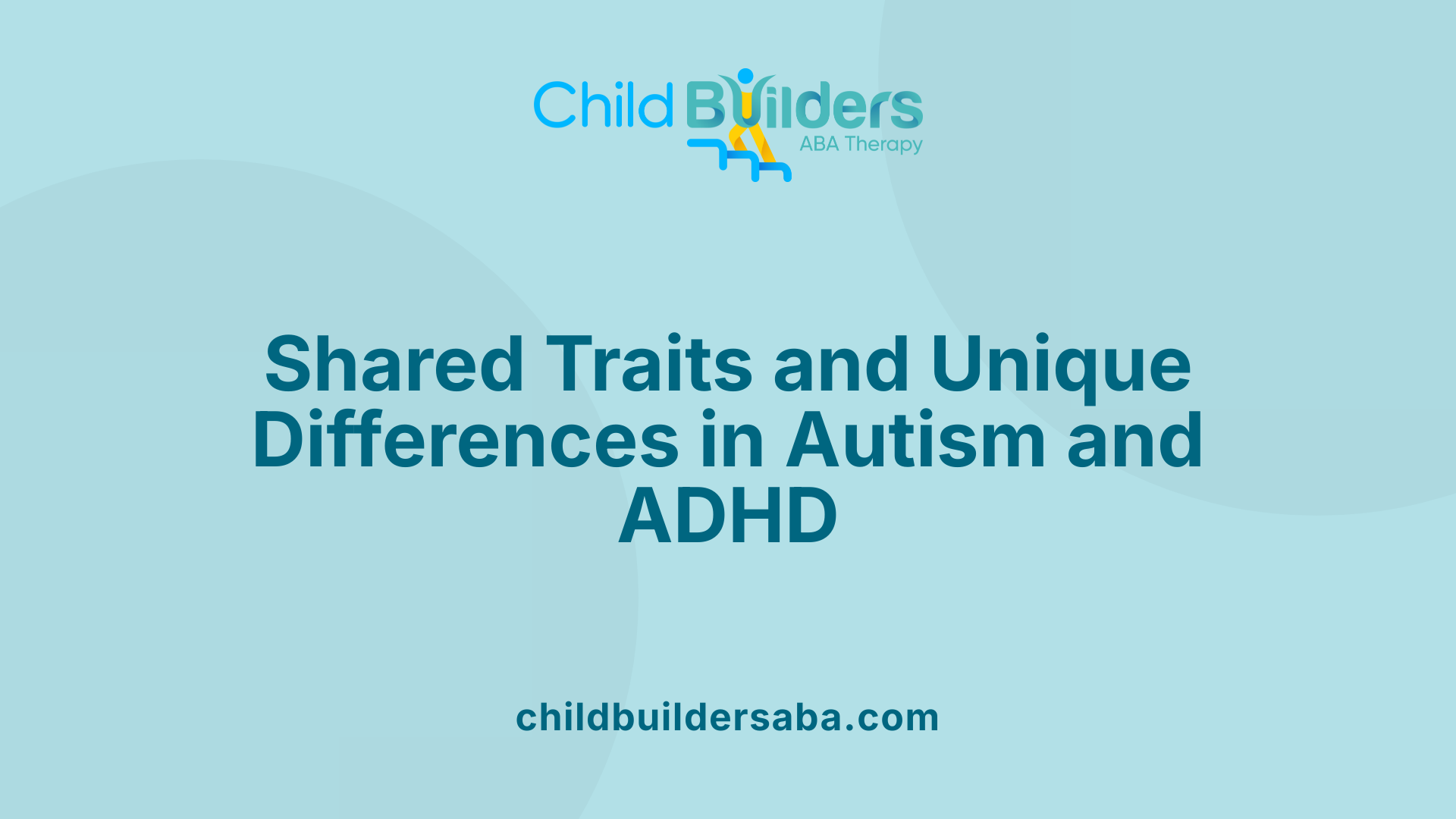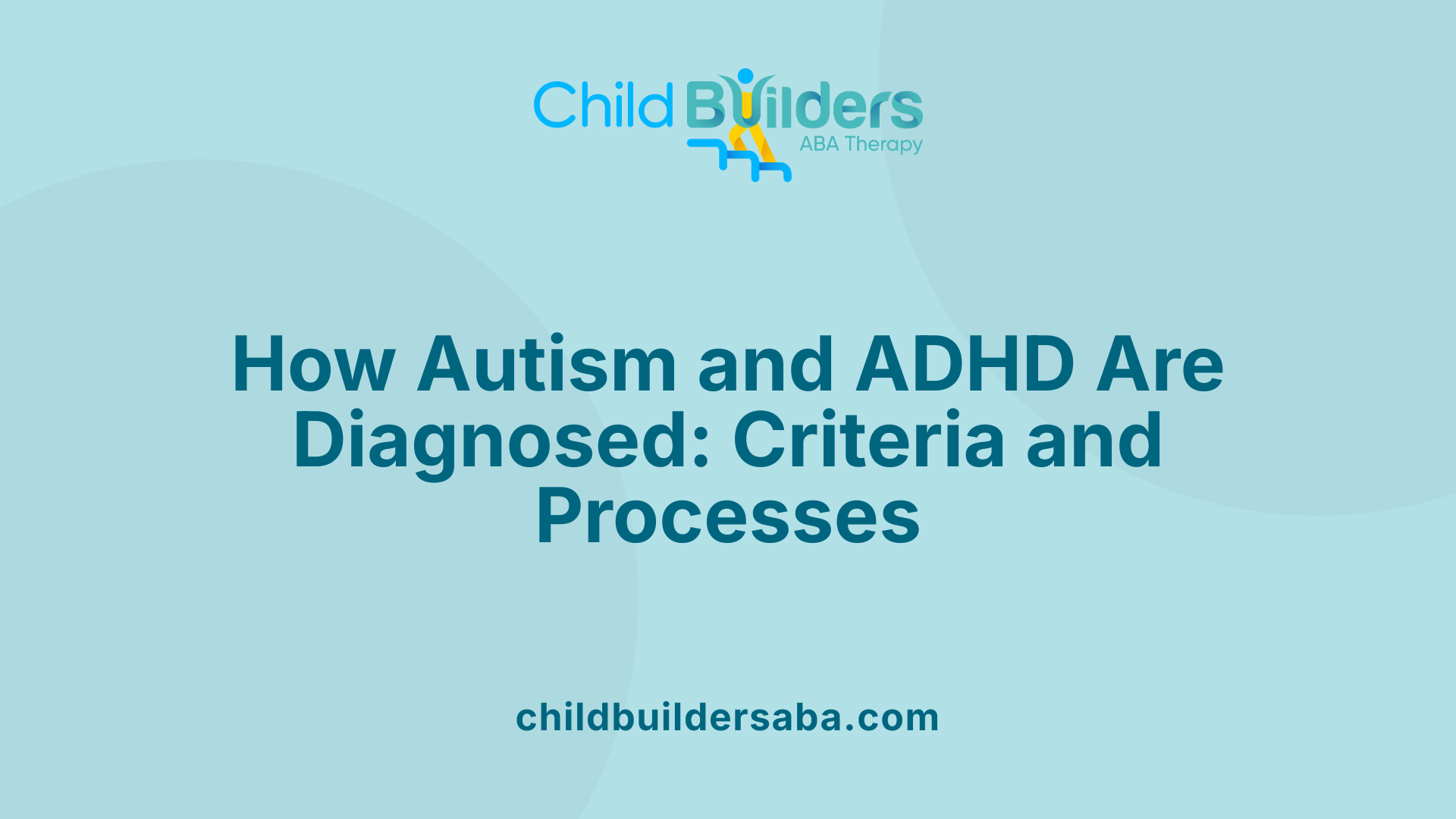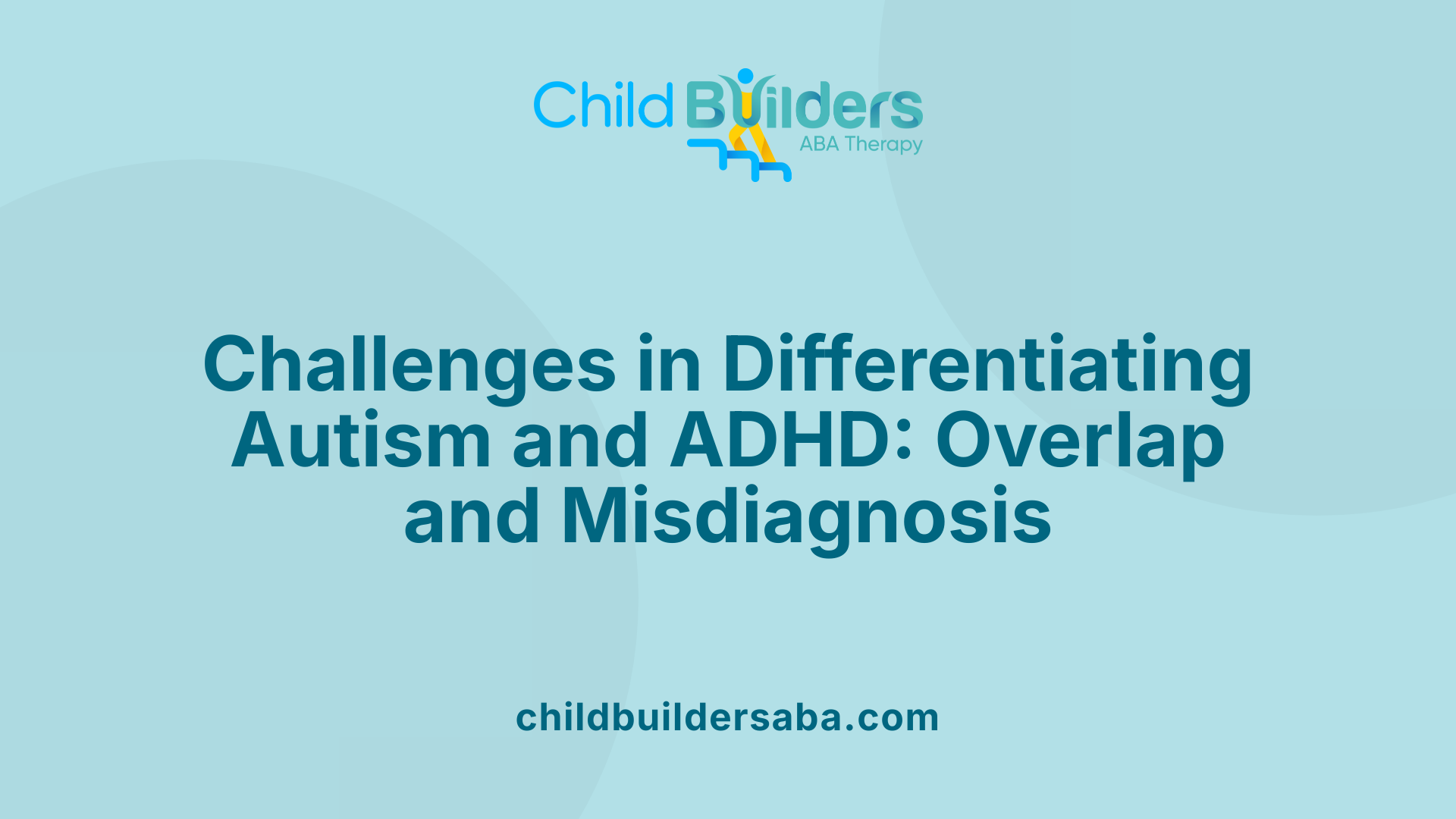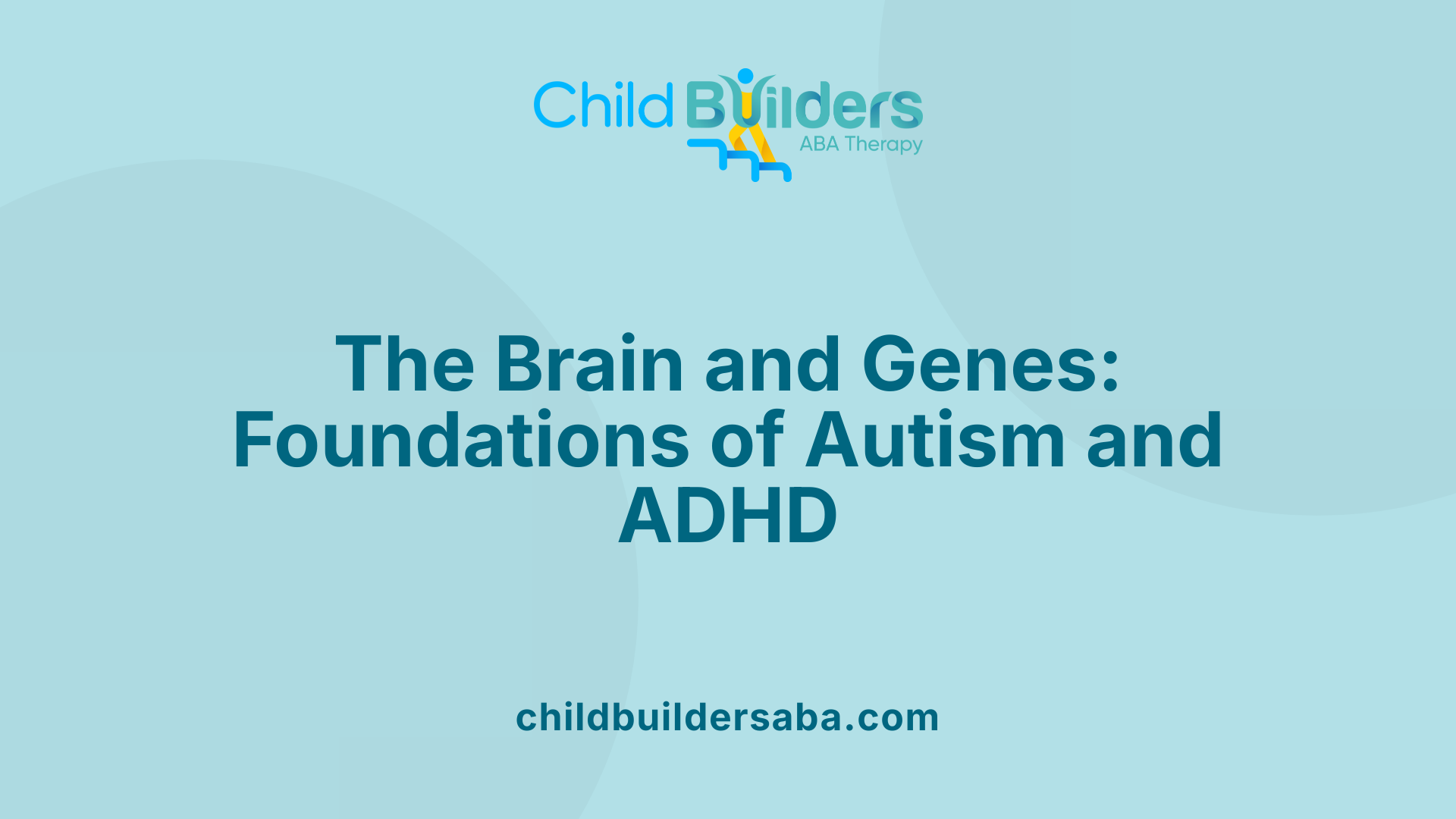Autism vs. ADHD

Understanding Autism and ADHD: Key Differences and Overlaps
Autism Spectrum Disorder (ASD) and Attention Deficit Hyperactivity Disorder (ADHD) are two of the most common neurodevelopmental conditions, each with distinct characteristics yet significant overlaps. Recognizing their unique features, diagnostic processes, and management strategies is crucial for effective support and intervention. This article explores these dimensions, emphasizing early detection, comorbidities, and the importance of accurate diagnosis.
Core Symptoms and Behavioral Traits

What are the similarities and differences between autism and ADHD?
Autism Spectrum Disorder (ASD) and Attention-Deficit/Hyperactivity Disorder (ADHD) are both neurodevelopmental conditions that can significantly affect a child's development and daily life. They often share certain behavioral traits, making diagnosis challenging at times.
Children with autism typically exhibit social deficits, including difficulty with eye contact, understanding social cues, and engaging in reciprocal communication. They often have specific routines they prefer and can become upset with changes. Repetitive behaviors, such as hand-flapping or lining up toys, serve to self-soothe and manage sensory input.
In contrast, children with ADHD display issues primarily related to attention regulation, hyperactivity, and impulsivity. They may talk nonstop, interrupt others, and struggle to wait their turn. Hyperactivity manifests as constant fidgeting, inability to sit still, and a need for stimulation.
Despite these differences, there are notable overlaps. Both groups often show high activity levels, sensory sensitivities, and challenges with social interactions. For example, children with ADHD might have trouble following instructions, similar to social communication difficulties seen in autism, though the root causes differ.
This overlap can lead to confusion in diagnosis. Autism focuses more on social communication impairments and restrictive behaviors, whereas ADHD centers on attention span and impulse control. Both conditions impact executive functioning, but the underlying neural pathways differ slightly.
Understanding these distinctions helps clinicians tailor interventions—behavioral therapy, medication, and educational support—more effectively. Ultimately, recognizing both shared and unique traits ensures children receive the appropriate support to enhance their development and quality of life.
| Symptom Domain | Autism Traits | ADHD Traits | Similarities | Differences |
|---|---|---|---|---|
| Social Interaction | Difficult with social cues, eye contact, and communication | Generally understand social rules but impulsive or inattentive | Both may have social challenges | Autism has profound social communication deficits; ADHD's are often due to impulsivity or inattention |
| Behavioral Patterns | Repetitive behaviors, routines, restricted interests | Fidgeting, hyperactivity, interrupting, nonstop talking | High activity levels, sensory sensitivities | Autism behaviors serve sensory regulation; ADHD behaviors seek stimulation |
| Focus and Attention | Intense focus on specific interests, inflexibility | Distractibility, difficulty sustaining attention | Both involve attention regulation issues | Autism involves hyperfocus and rigidity; ADHD involves distractibility |
| General Impact | Communication delays, sensory processing issues | Impulsivity, hyperactivity, executive dysfunction | Both affect daily functioning | Different core causes and manifestations |
Knowing these traits enables better diagnosis and intervention, addressing each child’s unique needs.
Diagnostic Criteria and Process

What are the diagnostic criteria and processes for autism and ADHD?
Diagnosing autism spectrum disorder (ASD) involves a detailed evaluation of a child's behavioral patterns and developmental history. Clinicians use standardized tools such as the Autism Diagnostic Interview-Revised (ADI-R), the Autism Diagnostic Observation Schedule (ADOS), and screening questionnaires like the Modified Checklist for Autism in Toddlers (M-CHAT). These assessments help identify persistent social communication difficulties, repetitive behaviors, and restricted interests that are characteristic of autism. The diagnosis aligns with criteria set by the DSM-5 and ICD-11, which require that these traits be evident early in development and significantly impact daily functioning.
In contrast, diagnosing ADHD focuses on observing enduring patterns of inattentiveness, hyperactivity, and impulsivity across multiple environments. The process relies on collecting comprehensive behavioral reports from parents, teachers, and caregivers. Symptoms must be present for at least six months and cause noticeable impairment in social, academic, or work settings. Unlike autism, there are no biological tests for ADHD; diagnosis depends on clinical judgment and rule-out of other possible conditions.
Both diagnoses demand careful clinical assessment by trained professionals. It is essential to differentiate between autism and ADHD, especially since some traits overlap, such as difficulty paying attention or social challenges. A thorough evaluation helps confirm the diagnosis accurately and guides effective intervention strategies.
Overlap, Co-occurrence, and Misdiagnosis Challenges

How often is ADHD misdiagnosed as autism, and vice versa?
Misdiagnosis between ADHD and autism is quite common due to the significant overlap in their symptoms, especially during early childhood. Studies suggest that about 37% to 85% of children diagnosed with autism spectrum disorder (ASD) exhibit symptoms associated with ADHD, such as inattentiveness, impulsivity, or hyperactivity. Conversely, estimates indicate that roughly 30% to 70% of children with ADHD also show autistic traits.
This high co-occurrence has historically presented challenges in clinical diagnosis. The DSM-IV's earlier editions made it difficult to diagnose both conditions simultaneously because of strict exclusion criteria, which meant a child could not receive a dual diagnosis. However, the DSM-5, released in 2013 and further supported by DSM-5-TR in 2022, now allows clinicians to diagnose both ADHD and autism concurrently, recognizing their common neurodevelopmental features.
Many overlapping characteristics—such as challenges with executive functioning, social interaction difficulties, sensory sensitivities, and neural markers—contribute to the difficulty in distinguishing the two conditions initially. This can lead to misclassification, with ASD sometimes mistaken for ADHD, or vice versa.
Overall, these diagnostic overlaps pose a significant challenge. Accurate assessment requires careful, detailed evaluation to differentiate core traits, ensuring children receive the most appropriate support and interventions. Increased awareness and refined screening tools are vital to reduce misdiagnosis and improve outcomes for children with these neurodevelopmental differences.
Neurobiological and Genetic Foundations

How are autism and ADHD connected?
Autism and ADHD are both neurodevelopmental disorders with notable overlaps in their genetic and brain structure features, often co-occurring in individuals, a combination sometimes called AuDHD.
Research suggests that there is a strong genetic link between the two conditions. Twin and family studies show an overlap in genetics ranging from 50% to 72%. This overlap indicates that shared genes may influence the development of both disorders, including traits like sensory processing difficulties, executive dysfunction, and social challenges.
At the neurobiological level, differences are observed in key brain structures like the basal ganglia, amygdala, and various cortical areas. These structures play roles in movement, emotional regulation, and cognitive flexibility. Variations in their development can contribute to shared symptoms such as attention problems, sensory sensitivities, and difficulties with self-regulation.
Despite these overlaps, distinct neurobiological profiles exist. For example, certain brain regions may show increased activity or structural differences in one disorder but not the other. In ADHD, hyperactivity and impulsivity are often associated with variations in the basal ganglia and prefrontal cortex, while autism may involve different patterns of connectivity and structure in the amygdala and social cognition networks.
Both conditions also share common neurological pathways related to attention regulation and sensory processing, which help explain overlapping behaviors like hyperfocus, sensory overload, or impulsive actions.
Understanding these similarities and differences is crucial for accurate diagnosis and personalized treatment plans. While overlapping features can complicate diagnosis, recognizing the unique neurobiological profiles supports targeted interventions that address specific cognitive and behavioral needs.
Management, Treatment, and Support Strategies
Are there effective management and treatment strategies for autism and ADHD?
Yes, there are multiple approaches proven to help children with autism and ADHD effectively. These strategies focus on improving daily functioning, social skills, communication, and reducing problematic behaviors.
Behavioral therapies such as Applied Behavior Analysis (ABA) are widely used for autism. ABA helps reinforce positive behaviors and teach new skills through structured, one-on-one interventions. Social skills training is also important for fostering better peer interactions and understanding social cues.
Medication options are common for managing ADHD symptoms. Stimulants like methylphenidate (e.g., Ritalin) are frequently prescribed to reduce impulsivity and hyperactivity. Nonstimulant medications such as atomoxetine may be used if stimulants are not tolerated. In children with co-occurring autism, medications like antipsychotics can help control irritability and aggression, but addressing core ASD symptoms with medication remains limited.
Educational and developmental interventions support learning and skill-building, tailored to each child's abilities and needs. These may include speech therapy, occupational therapy for sensory and motor skills, and cognitive behavioral therapy (CBT) adapted for children.
A multidisciplinary approach that combines behavioral therapy, medication, educational support, and family involvement offers the best chance for improving functional outcomes. Early diagnosis and personalized intervention plans are crucial.
Overall, effective management involves continuous assessment and adjustments based on the child's progress, ensuring that interventions are suited to evolving needs and maximizing growth.
Impact of Co-occurrence and the Path Forward
Children diagnosed with both autism and ADHD often experience more severe symptoms and greater functional impairments than those with only one condition. Studies have linked co-occurrence to worse social skills, more pronounced behavioral challenges, and increased difficulties in daily life. This overlap can complicate diagnosis and treatment, making it vital to understand that children with both conditions may require more comprehensive support.
Early detection of autism and ADHD holds particular importance. Identifying these conditions in infancy or early childhood enables access to targeted therapies before behaviors become ingrained. Early intervention can significantly improve language development, social interaction, and adaptive skills for children with autism. For those with ADHD, early diagnosis helps manage hyperactivity, impulsiveness, and attention issues through behavioral strategies and, if necessary, medication.
Developing individualized, holistic treatment plans is essential for children with co-occurring conditions. Approaches often combine behavioral therapy, speech and occupational therapies, and medication tailored to the child’s specific needs. This personalized support fosters better coping strategies, social functioning, and independence.
Ongoing research is crucial to deepen understanding of the shared neurobiological pathways and genetic factors linking autism and ADHD. Advances in neuroimaging and genetic testing are paving the way for more precise diagnoses and innovative treatments. As science progresses, there is hope for improved therapies that address overlapping symptoms more effectively and enhance quality of life for affected children.
| Aspect | Needs | Impact | Notes |
|---|---|---|---|
| Early Detection | Screening and assessment | Better developmental outcomes | Critical in childhood |
| Treatment Approaches | Behavioral, medical, educational | Symptom reduction, improved functioning | Customized by individual |
| Research Focus | Genetics, brain imaging | Improved diagnosis and therapies | Ongoing studies |
| Family Support | Education, counseling | Reduce stress, enhance caregiving | Integral to overall management |
Understanding the complexities of co-occurring autism and ADHD highlights the importance of early, comprehensive care to improve outcomes and support lifelong development.
Bridging the Gap in Understanding and Support
Autism and ADHD, while distinct in their core features, share notable overlaps and frequently co-occur, complicating diagnosis and treatment. Advances in research, diagnostic criteria, and awareness have improved how clinicians differentiate these conditions, allowing for more tailored and effective interventions. Early detection remains vital, as it maximizes developmental outcomes and quality of life for individuals and families. Continued research into their neurobiological links and shared traits will enhance our ability to support those affected, fostering a more inclusive and understanding environment for all neurodivergent individuals.
References
- Is It ADHD or Autism? - WebMD
- Is it ADHD or Autism? (Or Both) - Neurodivergent Insights
- ADHD vs. Autism: What's the Difference?
- Attention-deficit Hyperactivity Disorder and Autism Spectrum Disorder
- ADHD and autism | Autistica
- overlap, distinctions, and nuances of ADHD and ASD in children
- ADHD vs Autism Symptom Comparison - Psychiatry Advisor
- Is It ADHD or Autism? - CHADD
- Autism and ADHD: What are the key differences?
- Autism vs ADHD | Charlie Health



.jpg)

































































































